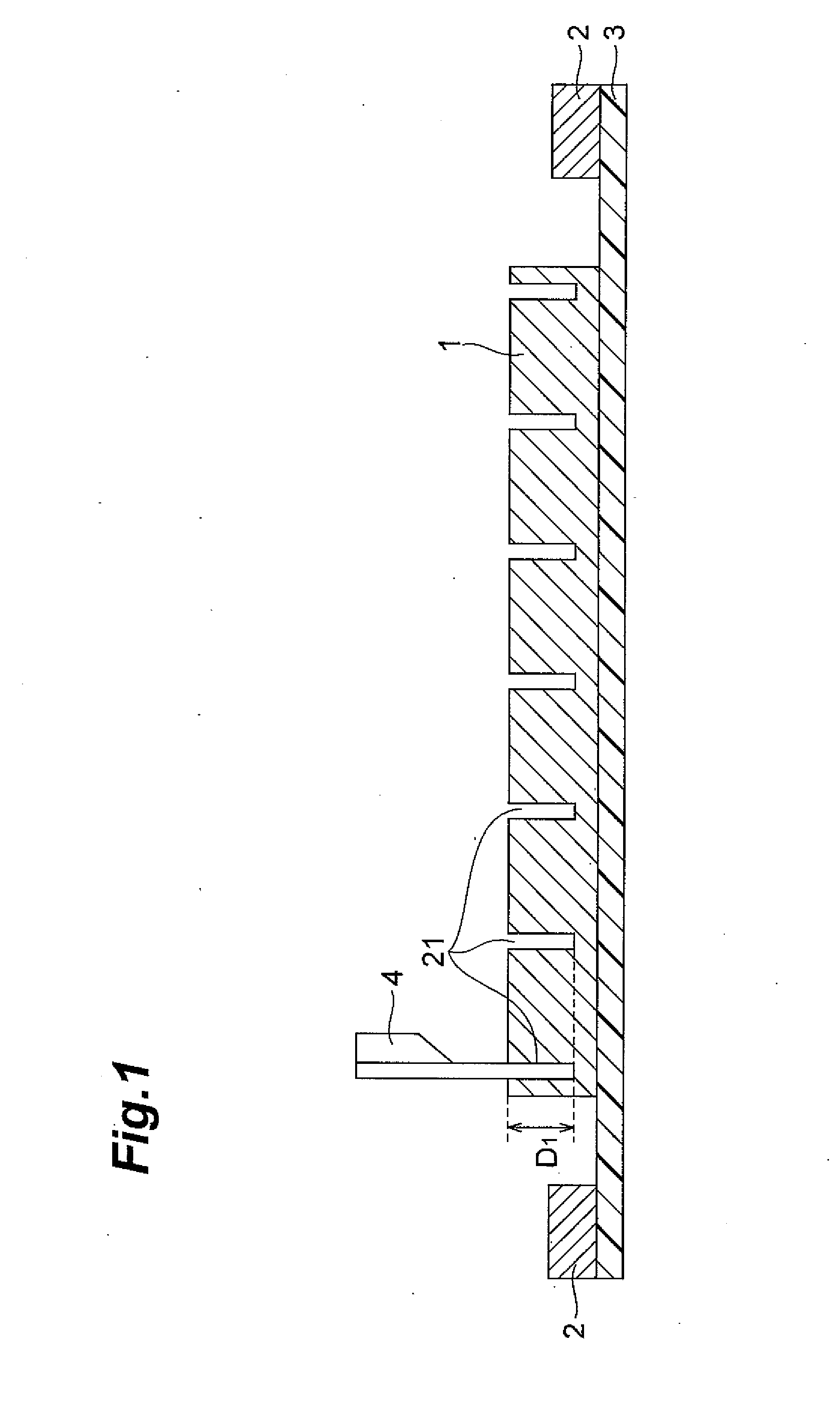Method for producing semiconductor chip with adhesive film, adhesive film for semiconductor used in the method, and method for producing semiconductor device
- Summary
- Abstract
- Description
- Claims
- Application Information
AI Technical Summary
Benefits of technology
Problems solved by technology
Method used
Image
Examples
example 1
[0083]A 500 ml four-neck flask equipped with a thermometer, a stirrer and a calcium chloride drying tube was charged with diamines, i.e., 1,3-bis(3-aminopropyl)tetramethyldisiloxane (0.06 mol) and 4,9-dioxadecane-1,12-diamine (0.04 mol), and 150 g of N-methyl-2-pyrrolidone as a solvent, and the mixture was stirred at 60° C. to dissolve diamines.
[0084]After dissolving diamines, 1,10-(decamethylene)bis(trimellitate dianhydride) (0.02 mol) and 4,4′-oxydiphthalic acid dianhydride (0.08 mol) were added thereto in small portions and the mixture was allowed to react at 60° C. for 3 hours. Then the mixture was heated at 170° C. while blowing N2 gas thereinto to remove water in the system with some of the solvent by azeotropic distillation over 3 hours. A polyimide resin solution was prepared in this way.
[0085]To an NMP solution of the polyimide resin prepared above (containing 100 parts by mass of polyimide resin) were added 4 parts by mass of cresol novolac epoxy resin (available from Toht...
example 2
[0087]A varnish prepared in the same manner as in Example 1 was applied to a release-treated polyethylene terephthalate film (film A31 having a thickness of 50 μm available from Teijin DuPont Films Japan Limited) and the resultant was heated at 80° C. for 30 minutes and then at 120° C. for 30 minutes to give an adhesive film for a semiconductor having a thickness of 15 μm.
PUM
| Property | Measurement | Unit |
|---|---|---|
| Fraction | aaaaa | aaaaa |
| Fraction | aaaaa | aaaaa |
| Thickness | aaaaa | aaaaa |
Abstract
Description
Claims
Application Information
 Login to View More
Login to View More - R&D
- Intellectual Property
- Life Sciences
- Materials
- Tech Scout
- Unparalleled Data Quality
- Higher Quality Content
- 60% Fewer Hallucinations
Browse by: Latest US Patents, China's latest patents, Technical Efficacy Thesaurus, Application Domain, Technology Topic, Popular Technical Reports.
© 2025 PatSnap. All rights reserved.Legal|Privacy policy|Modern Slavery Act Transparency Statement|Sitemap|About US| Contact US: help@patsnap.com



